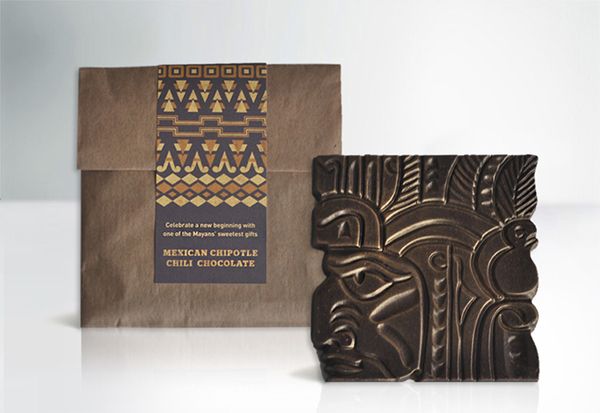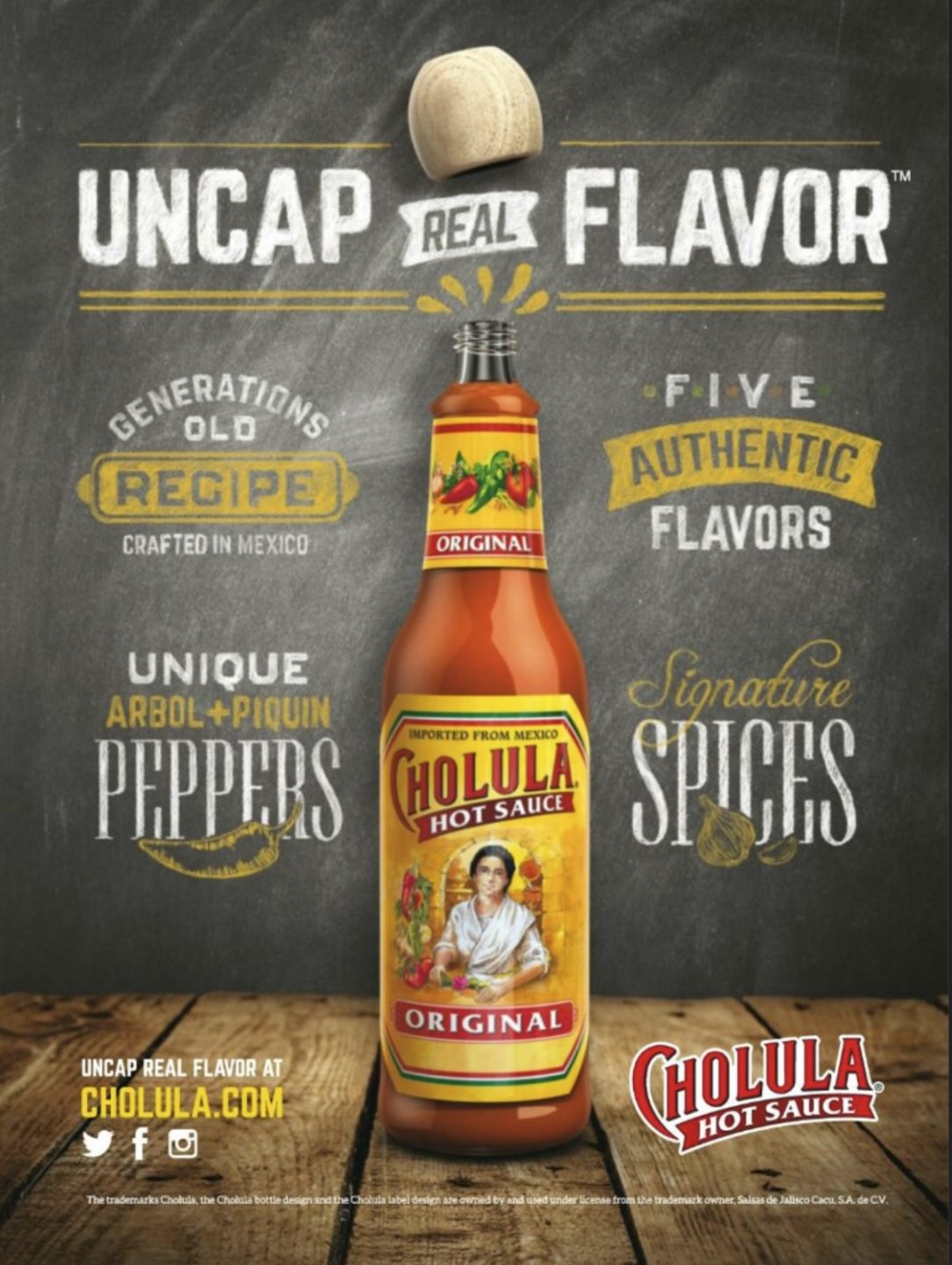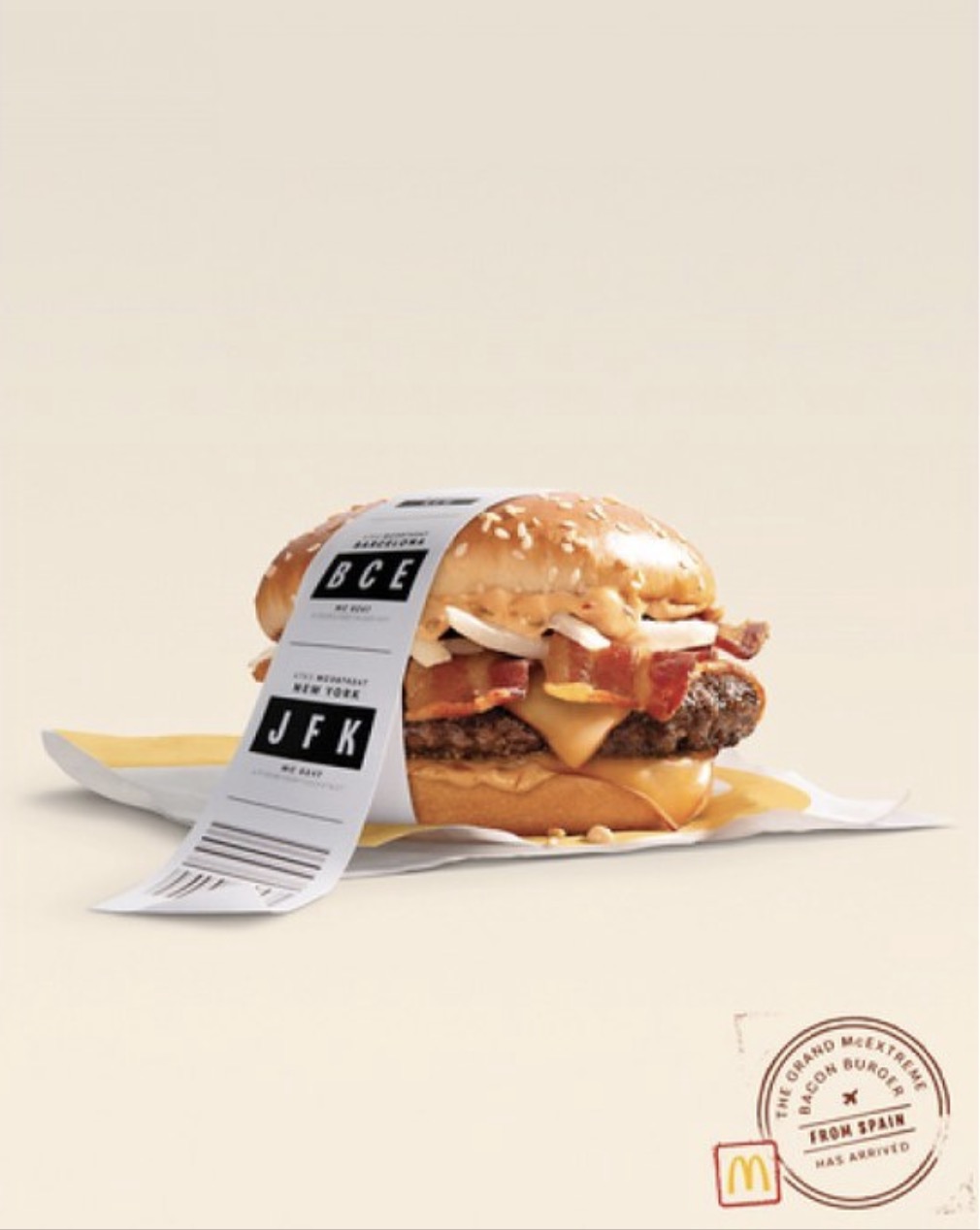Thin Description
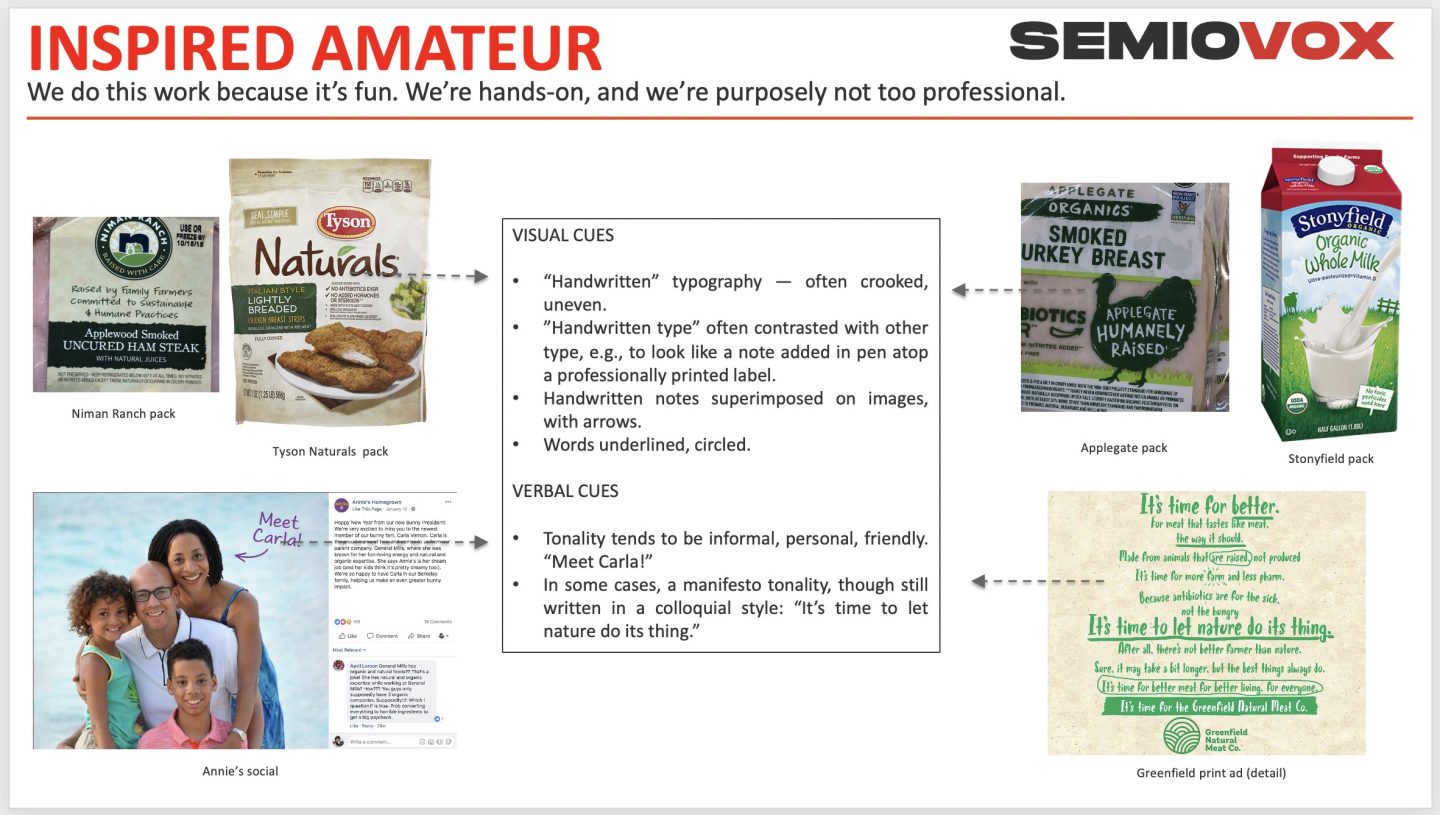
This is the third post in a series demonstrating the process via which Semiovox’s interpretative inquiry produces insights and inspiration — richer and deeper than what consumer research alone can provide — regarding a product category’s or cultural territory’s unspoken meanings.
Now that we’ve completed our Real Food stimuli research (see previous post in this series), we’re ready to undertake an initial analysis of the hundreds of stimuli that we’ve assembled.
I say initial analysis because Semioivox’s approach to interpreting the meaning of stimuli is a hermeneutic one: An understanding of the whole picture can only be established by reference to the individual parts; and an understanding of the individual parts can only be established by reference to the whole picture. We’re not ready to think about the whole picture, at this stage in our Real Food audit; instead, we’ll engage in “thin description.”
The output of this phase of the audit will be “source codes” (aka signs); or, as ethnographers might describe them: “field notes.” Ethnographic fieldwork, carried out according to the method of participant-observation, is what defines social anthropology. The method is inductive and open-ended — which is to say, it directs the anthropologist to study that which is of significance to the community studied rather than test hypotheses formulated in advance of the fieldwork. What we mean by “source codes” or “field notes” is: first thoughts, observations, interpretations. What signals or patterns do we perceive emerging from the stimulus set’s “noise”?

A note on Semiovox’s unique approach: Each of our audits surfaces eight paradigms, paired into four binary codes. (A semiotic code is always a binary opposition — two paradigms, each of which is defined in and through its opposition to the other.) Each paradigm is composed of two contrasting thematic complexes; each of these complexes is dimensionalized by source codes (aka signs); and each source code is composed of a norm and a unique visual/verbal form which brings that norm to life. Our methodology involves first identifying source codes from within the stimuli we’ve researched, then — through our meta-analysis of these signs — building a theory about the matrix of meaning which, operating below the level of daily consciousness, enables members of a culture to intuitively “make sense” of everything from brand communications to pop culture, social media, and retail spaces.
Source Codes
Making every effort to approach our collected stimuli without bias or presuppositions, for example by imagining ourselves to be alien anthropologists puzzling over Earthlings’ mysterious, exotic customs and rituals, our aim at this juncture is simply to capture our immediate, more or less intuitive impressions of the stimuli. What sorts of Real Food norms (ideas, values, higher-order benefits) do we seem to find expressed in the stimuli? Which is to say: What does this Real Food stimuli mean? And what particular forms — i.e., verbal and visual cues, whether words, phrases, and tonality or colors, shape, facial expressions, body language, contexts, actions, etc. — tend to be associated with each of these Real Food norms? Which is to say: How does this Real Food stimuli mean what it means?
The combination of a unique norm and a particular form (or array of forms) bringing that norm to life is what we call a source code (or sign.) What we’re identifying and dimensionalizing via the practice of thin description are first-draft source codes, if you will.
Why first-draft? Because a source code derives its meaning from the meaning-matrix of which it forms a part; but at this stage in our audit, we haven’t built a model of that matrix yet. We’re assembling the constitutive elements of a meaning-matrix; however, as our audit proceeds, we’ll keep tweaking our descriptions of each field note. Perhaps we won’t find enough evidence to support our initial hypothesis about what and how a piece of stimuli means. Or we’ll decide that one of our source codes is really two source codes mashed together; or we’ll realize that two of our source codes are in fact aspects of a single source code. That’s why, at this stage of the audit, it’s safer to describe our initial source codes as “field notes.”
We’ll return, again and again, to the twin question of what the stimuli means and how it means what it means. Through charting our Real Food norms and forms vis-à-vis one another, and developing a concept of the whole picture, our initial “thin” descriptions of Real Food’s what/how will become “thicker.” (Thanks, Clifford Geertz, for this terminology.) For the moment, though, a thin description of our stimuli is how we’ll begin.
Inspired Amateur
Here’s a sample thin description of a Real Food field note (i.e., a Real Food source code in progress) that we’ve titled INSPIRED AMATEUR.

One signal that quickly emerged from the noise of our stimuli set is the use of “handwritten” typography on packaging, in advertising, in social media, and elsewhere. We came across this type treatment often enough, within this audit’s stimulus set, to feel certain that the form is meaningful within the Real Food universe. It signifies something relevant and engaging to Real Food consumers. So what might it signify? Our hypothesis is that the use of handwritten-style type is intended to communicate a message, from Real Food brand to consumers, along these lines: “We do this [Real Food] work because it’s fun. We’re hands-on, and we’re purposely not too professional.”
This analysis is based in part on intrinsic clues, i.e., found within the material. The tonality of the words rendered in handwritten-style type is frequently informal, personal, friendly: “It’s time to let nature do its thing.” The handwriting tends to be charmingly crooked, uneven — as though scribbled hastily, almost a note to oneself. (As we’ll see, handwritten-style type can be more stylized and studied, less casual and dashed-off than this.) These intrinsic clues help us feel confident about our thin description.
Taking off our alien-anthropologist blinkers, for a moment, we can also consider extrinsic arguments for our hypothesis. We know, both as Americans immersed every day in American culture, and as analysts who have spent over 20 years making a close study of American culture, that charmingly dashed-off handwriting is often deployed to signify “informal, personal, friendly.” We’ve seen such handwritten notes in TV shows, movies, and in advertising. We’ve written and received such notes ourselves. So we have anecdotal back-up for our hypothesis.
What happens when we search Semiovox’s SEMIODEX database for the meta-tag “handwritten”? A couple of hundred examples come up, going back 10 years; these examples tend to confirm our thin description (given above) of the INSPIRED AMATEUR stimuli. Here’s a sampling:

Google print ad 
Family Circle Magazine 
Oprah Magazine 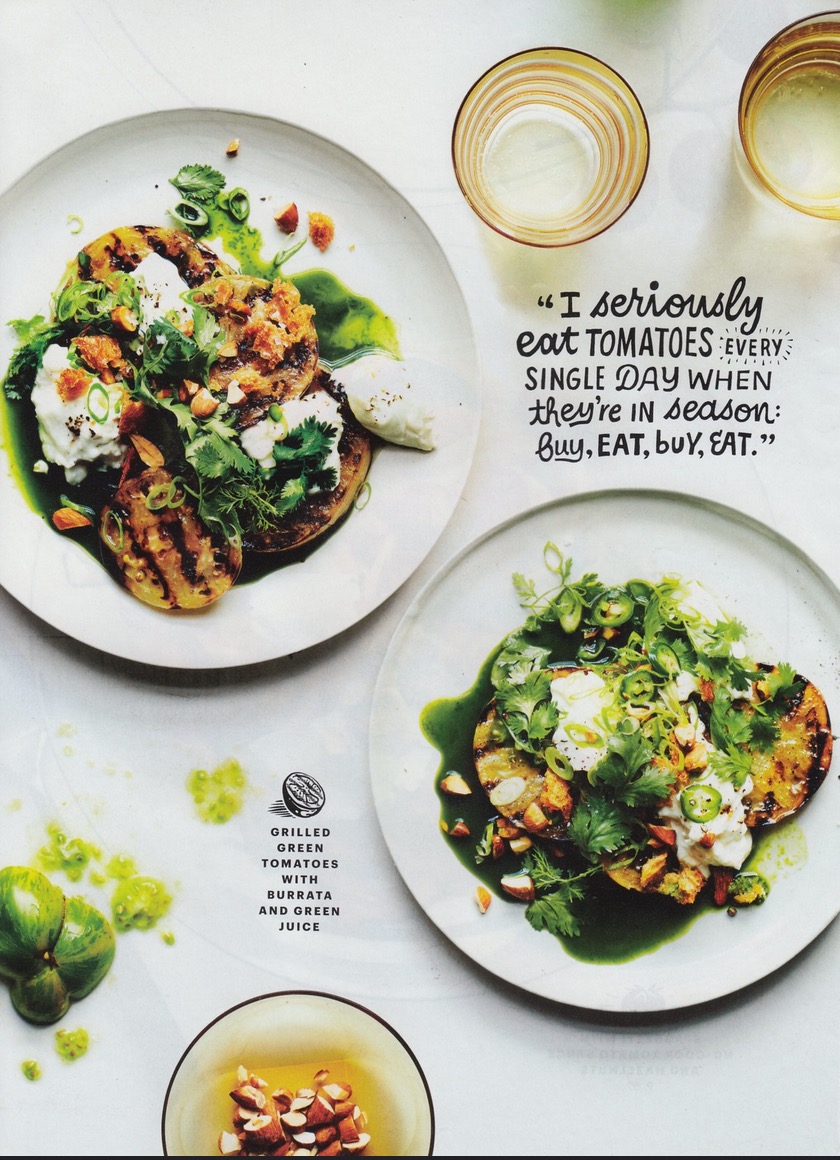
Bon Appetit Magazine
Having taken intrinsic and extrinsic clues into account, we’re prepared to move on in our search for additional Real Food field notes. The goal of this phase of the audit, as you’ve just seen, is to surface norm/form combinations from within the audit’s stimulus set, then dimensionalize them by writing initial “thin” descriptions. Depending on the category or cultural territory under investigation, not to mention the project scope and timing, we might end up with anywhere from 15 to 50 field notes in total. This audit turned up ~40.
For comparison’s sake, in this post we’ll describe one more Real Food field note.
Exotic Source
Let’s call this thin description of a Real Food source code (in progress): EXOTIC SOURCE.
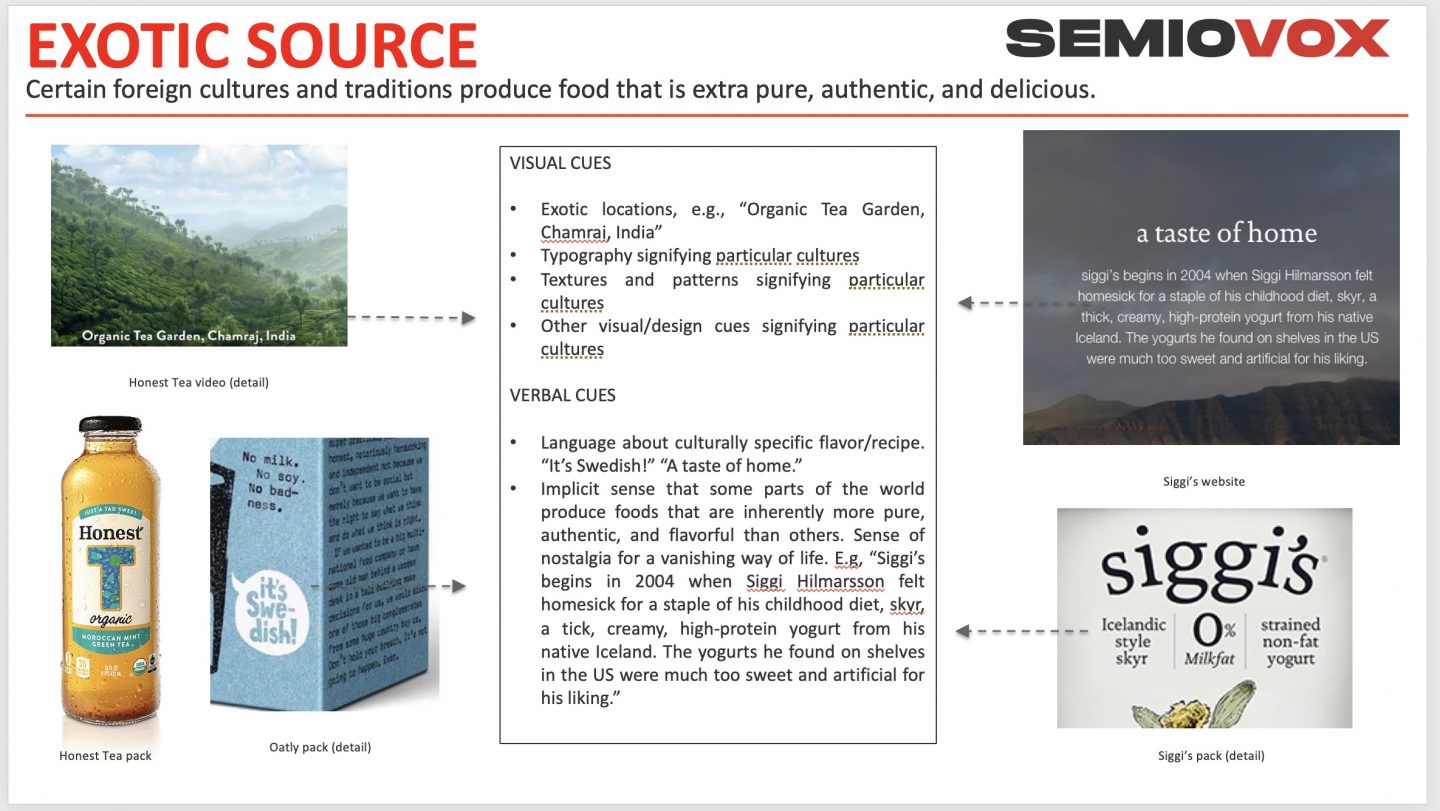
Perusing the packaging, websites, social media posts, and advertising in our stimulus set, another pattern we notice is the prominent mention of far-away locales: India, Sweden, Morocco, Iceland, to name just the countries referenced in the field note shown above. We don’t just find mentions of these far-off lands, we also find images, typography, textures, and design cues that visually signify these countries and their indigenous cultures. And we find language expressing some aspect of a country’s culture and ways of life. In Iceland, for example, although yogurt is “thick, creamy, high-protein,” it is not “sweet and artificial,” like yogurt in America apparently is. Combined with the rugged cliffs in the image from the Siggi’s website, one receives the impression that life in Iceland is harsh, difficult, authentic, and therefore more pure, salubrious, and and for these reasons rewarding than life in our sweet, artificial, industrialized and deracinated United States. Other countries and their food traditions, meanwhile, are characterized differently; all, however, are depicted as exotically different from US foods.
So much for the forms. Relying, as always, on intrinsic and extrinsic clues, we’ll temporarily characterize the EXOTIC SOURCE norm as: “Certain foreign [i.e., to US consumers] cultures and traditions produce food that is extra pure, authentic, and delicious.”
A quick trawl through the SEMIODEX databse turns up hundreds of supporting examples.
We can agree that both of these field notes — two out of ~40 that we surfaced, via our initial analysis of this audit’s stimuli — communicate aspects of Real Food.
Furthermore, we can agree that neither of these field notes is particularly surprising. Even before doing any research, we probably could have predicted that an audit of Real Food category communications would turn up examples of handwritten typography, and examples of exotic sources. That’s OK! Remember, we’re acting as alien anthropologists. It’s crucial that we don’t take anything for granted, just because we’re familiar with it. The point is to paint a landscape, if you will, of the assumptions and associations that we (members of a particular culture) have likely absorbed through years of exposure to advertising, packaging, media, and culture.
We’re concerned to identify “dominant” source codes, but we also want to identify “residual” and “emergent” source codes. We’ll address this in a future post. For now, let’s just reiterate that stimuli set design is crucial in this effort. If we’re only including category leaders in our audit, then it’s unlikely we’ll discover many emergent source codes.
The process of taking “field notes” is an exhaustive, sometimes exhausting one. We’re brooding over hundreds, sometimes over a thousand stimuli — looking for patterns, asking ourselves what color schemes, type treatment, facial expressions, contexts, tonality, etc., etc., might mean in this context. Our field notes deck is sometimes 200–300 slides. It’s the heavy lifting phase of the audit. It can be tedious. But it’s crucial that we do it well. Because our field notes will serve as raw material for the thick-description phase.
Next Step: THICK DESCRIPTION (DEDUCTION)


